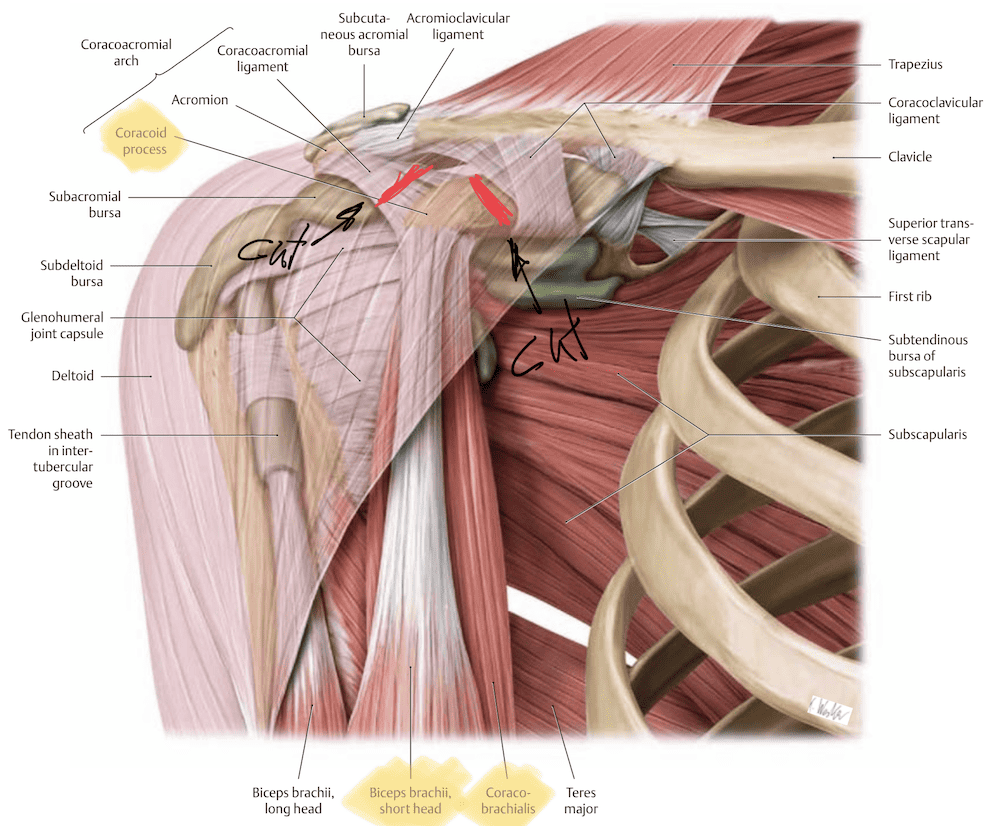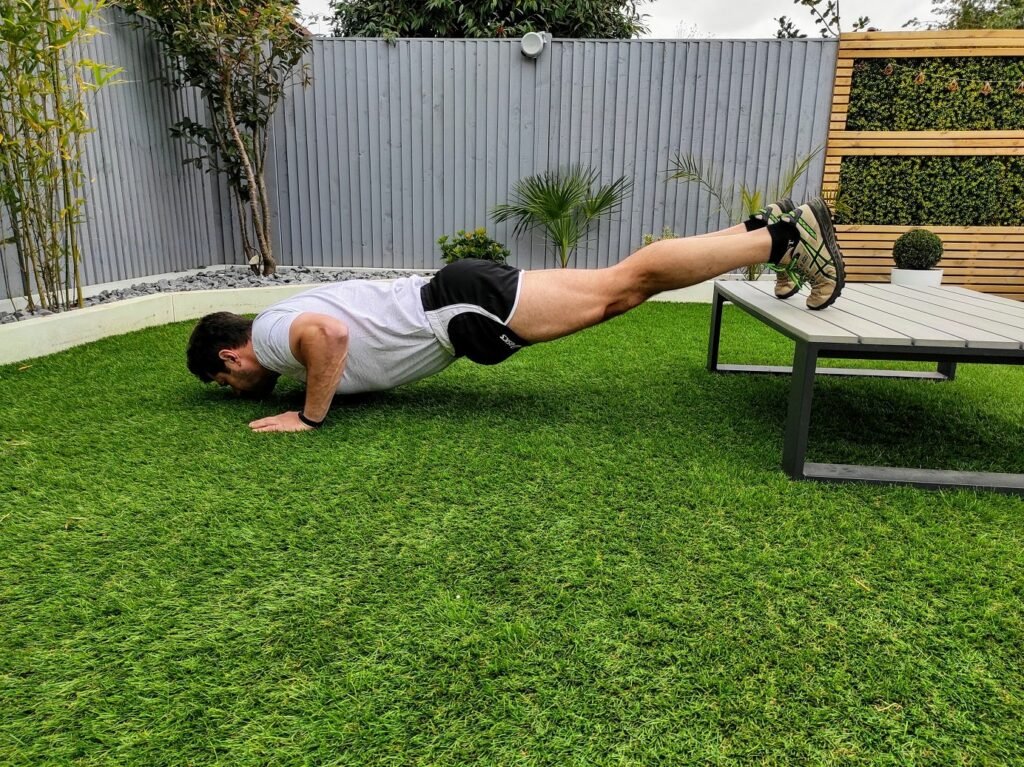Latarjet Surgery can be a definitive way to resolve chronic instability with or without repeated dislocations of the shoulder in rock climbers. A scientific review from 2020 that looked into the success rate of the Latarjet procedure found that only 0-12% of patients experienced recurrent instability 10 years after the surgery. Still, you should never consider surgery before trying conservative treatment for 6-12 months.
In this article, discover how a Latarjet Procedure is done, what the rehab looks like, and if it’s the right treatment for your shoulder.
Let’s dive right in.
1. How is Latarjet Surgery Done?
Latarjet Surgery is a surgical technique that helps to prevent shoulder dislocations /instability. French doctor Michel Latarjet developed the procedure in 1954. This type of surgery is usually done using an “open” technique. This means that the surgeon makes an incision of around 10-15 centimeters at the front of the shoulder. Then, the tip of the coracoid process is dissected (sawn-off) and relocated to the front of the glenoid. This is the anterior part of the shoulder socket and is the location where shoulder dislocations happen most often.

3 muscles originate at the coracoid process. These are the:
- Coracobrachialis
- The short head of the biceps
- Pectoralis minor
This means that when you change the location of the coracoid process you also change the location and function of the muscles. The Pectoralis Minor is cut off entirely, so you don’t have that muscle anymore post-surgery. The remaining two muscles and tendons will generate a “double-sling” effect around the anterior part of your shoulder joint. This will now provide anterior stability to your shoulder.
2. What Does Rehab after a Latarjet Procedure Look Like?
Rehab after Latarjet starts the day after your operation. You’ll be asked to wear a sling and not load or move your shoulder for 6 weeks. You can reduce any chance of lasting negative consequences of the surgery by abiding strictly by the movement restrictions your surgeon prescribes for this period. Usually, you’re allowed to lift your arm with the help of the healthy side up to shoulder height and you can externally rotate it similarly if it’s pain-free.
These restrictions are necessary to ensure that the tip of the coracoid process now screwed onto the front of the glenoid grows together well. The better the bony union the more stable your joint will be. In rare situations, a stable non-union is a possibility. This shouldn’t worry you because the coracoid process is stable.
Once you pass the first 6 weeks you can usually start moving your shoulder freely whereas after 10-12 weeks you can start strength training. I always think it’s important to remember that these first 6 weeks of wearing a sling are not only necessary for proper healing but are also the reason your shoulder will be super-stiff after.
This can be frustrating and unsettling if you’re as passionate of a rock climber as most rock climbers are. Still, taking your rehab step by step will ensure the best results.
The big lines of your rehab will look something like this:
- 0-6 weeks: wear a sling and reduce active movements in the shoulder on the operated side. Passively move your shoulder frequently with the help of your healthy arm or with the support of a physical therapist. I recommend taking it really easy the first 2 weeks and then slowly starting training anything that isn’t affected by the surgery. This means you can train your legs, core, and opposite upper extremity. You should also move your scapula, elbow, wrist, and fingers often on the operated side. Go for long walks and ride a stationary bike for cardio.
- 6-12 weeks: full range of motion allowed. However, you won’t be able to do this yet. Your shoulder will likely be stiff as a brick and require a lot of movement, light stretching, and assisted range of motion exercises to regain its’ mobility. Do all of this while continuing to train everything you were training before.
- 12 weeks+: you can start strength training and should do so in all ranges but always with the proper quality. Be wary of developing compensatory mechanisms either due to weakness or lack of mobility.
- 16 weeks: the earliest moment you might be able to return to super easy, super light rock climbing on big plastic jugs. If you lack mobility and or strength this moment might come later.
- 16 weeks and onwards: continuing strength training and climbing-specific training to prepare you optimally for climbing back at redpointing levels. This will take another 2-5 months.
3. How Will Latarjet Surgery Affect Your Rock Climbing?
A Latarjet Surgery will limit you from any rock climbing for at least 4 months. After that a slow return to your previous climbing level is possible. Still, you might experience persisting stiffness and you may remain weaker in the operated shoulder.
The 2 most likely reasons you’ll experience persisting negative consequences of the procedure if at all, are:
- Sub-optimal positioning of the coracoid process on the glenoid
- Sub-optimal rehab
Luckily, you can influence both. First, by choosing an experienced surgeon who has done the Latarjet procedure often, and second by dedicating plenty of time to your rehab. Because good rehab is a straight-up elite sport in and of itself. The more you treat it that way, the better your results will be.
Furthermore, the fact that you had surgery can cause you to relate differently to your shoulder. Now, this shoulder is your “weak”, “broken”, “painful”, or “damaged” shoulder. However true this might be, it won’t help you to climb worry-free. Addressing these feelings and insecurities during rehab is as important as doing exercises. The more secure you feel about your shoulder the more natural you move and the less likely you’ll experience negative consequences. And, before you know it you have forgotten which side you did surgery on.
4. Should You do Latarjet Surgery?
If you have recurring shoulder dislocations, you’re below 30-35 years of age, and you want to be able to climb performance-oriented, a Latarjet surgery might be an option. But always try conservative treatment first. Dedicate to it fully for 6-12 months to make the right decision.
As things go, a Latarjet Procedure is still a surgery with all its risks. Here are some to consider:
- Infection due to surgery
- Increased chance of osteoarthritis in the shoulder, which is even more likely if the coracoid process is positioned over the joint surface. Chances of osteoarthritis go up with repeated dislocations as well.
- Unstable bony non-union i.e. failed surgery
- Up to 12% chance of recurring instability within 10 years post surgery
Yet, the chances of dislocation after Latarjet are super small and Latarjet is, therefore, if done by an experienced surgeon screwing the coracoid process in the right place (it’s about millimeters here, perhaps less), a good surgery.
If you’re older than 35 your tissues are likely to be stiffer; therefore, repeated shoulder dislocations are less detrimental. Still, if you have tried a conservative treatment and can’t climb the way you want, you could consider a Latarjet procedure.

